 |
 |
|

|
|
|
|
© Looking for Lincoln Heritage Coalition • #1 Old State Capitol Plaza • Springfield, IL 62701 • 217.782.6817 |
|
Lincoln's connection to Galesburg is an important one. Old Main at Knox College, the site of the 5th Lincoln
Douglas Debate, is the only original debate site still standing. Large bronze tablets flank the east door,
commemorating the debate. Poet Carl Sandburg was born in Galesburg and his birthplace is open to the public.
Sandburg is associated with Lincoln because he is possibly the most famous of Lincoln scholars. His early
years in Galesburg helped to shape his literary talents and his life-long interest in Lincoln. |


|
|
Rich in history, Nauvoo is a quaint mid-western town, considered to be a Crossroads in History. Located in
Hancock County, Illinois, Nauvoo came to be a place of constant change and evolution among diverse groups
that happened upon this beautiful area nestled along the Mississippi River. |


|
|
Settled in 1831, Carthage has a long history as a center for business, political activity, and
the farming community. Two of the most famous historical events to ever occur were the mob
slaying of the Mormon founder, Joseph Smith, at the Old Carthage Jail in 1844 and on October
22, 1858, Abraham Lincoln gave a speech in Carthage while campaigning for the Senate. The
speech spot is commemorated by a large stone on the south side of the Courthouse square. |
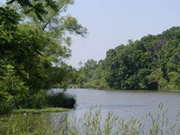

|
|
Lincoln counted many Quincy residents as his closest friends. He served with future U.S. Senator Orville H.
Browning and future Governor John Wood in the Blackhawk War in 1832. His contacts with Quincyans in the state
legislature and in Whig and Republican affairs were important to his political development. |

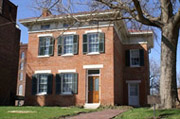
|
|
Since its evolution from a single retail shop to one of Illinois' most celebrated small
districts, Seminary Street has been synonymous with originality & entrepreneurship. Once
nearly abandoned, the three block area now thrives with restaurants, a bakery, coffee
roastery, pub, historic antique mall, over 20 distinctive specialty shops, the Galesburg
Railroad Museum, and Discovery Depot Children's Museum. |
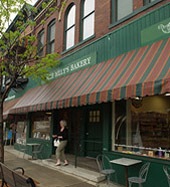

|
|
Walking through the door of this museum is like stepping back in time. Featuring a full offering
of many historical artifacts and collections including pioneer tools, clothing, and many other
treasures from the early days of Illinois and Hancock County. |

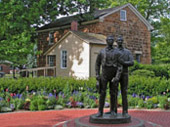
|
|
The Joseph Smith Historic Site retells the story of the Latter Day Saint movement in Nauvoo
during the early 1840s. Within the Visitor Center, guests will find original paintings of
Nauvoo by David Hyrum Smith as well as other artifacts and information about the city and its
people. Guided walking tours begin at the Visitors Center, starting with a short film and
continuing through the Smith family's homes. |
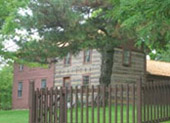
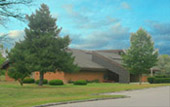
|
|
Built in 1857, “Old Main” located on the Knox College Campus, is best known as the
site of a Lincoln-Douglas debate that took place on October 7, 1858. Old Main is
the only one of the eight debate sites still standing. The building itself played
a role: the speakers’ platform blocked the east door, forcing Lincoln and Douglas
to climb through a window to reach their seats. Lincoln is said to have joked that
he had finally “gone through college.” Large bronze tablets by sculptor Arvid
Fairbanks now flank the east door recording the debate.. A recently installed Looking
for Lincoln outdoor wayside exhibit provides information about Galesburg at the
time of the debates and the key issues that were debated at that location. The site
can be viewed at anytime and is located at the east end of “Old Main.” |


|
|
Lincoln author and poet Carl Sandburg was born in this modest three-room cottage on
January 6, 1878. The home reflects typical living conditions of a late-nineteenth
century working class family. Many of the furnishings once belonged to the Sandburg
family. Behind the home is a small wooded park that features a simple memorial to the
poet. Sandburg’s ashes were returned, as he had requested, to his Galesburg birthplace.
They were placed in the park under a granite boulder called Remembrance Rock. Next to
Sandburg’s birthplace is a visitor center which features a film about Sandburg and a
variety of exhibits which recount important details of his life. |


|
|
A short jaunt down from the spot on South Fifth Street where Lincoln and Douglas
debated in Quincy in 1858, the Lincoln-Douglas Debate Interpretive Center is a
relatively new Lincoln location within Quincy. Though Douglas have been considered
by many of the time to be the winner of the seven debates, the spotlight that shone
on Lincoln propelled him to the presidency, where he also battled Douglas for the
presidency in 1860. |

|
|
The John Wood Mansion is the restored home of Quincy’s founder and the twelfth Governor
of Illinois, John Wood. The mansion is recognized by historians and architects as one of
the Midwest’s finest existing examples of Greek Revival architecture. The 1835 Pioneer
Log Cabin is preserved, refurbished authentically, and features a pioneer garden. The P
arsonage displays items depicting the history of Adams County while preserving a historic
parsonage. The Parsonage is open during office hours. |

|
|
The home of Dr. Richard Eells, an abolitionist, symbolizes the key issue addressed by
Lincoln and Douglas during their Quincy Debate. Built in 1835, it is one of the oldest
buildings in Quincy and is a documented Underground Railroad station. It is located
four blocks from the Mississippi River and was within sight of the debate. Ironically,
Eells was a distant cousin of Abraham Lincoln, and he was convicted by Judge Stephen A.
Douglas of helping a slave escape. |

|